Memories of Heidelberg -1900

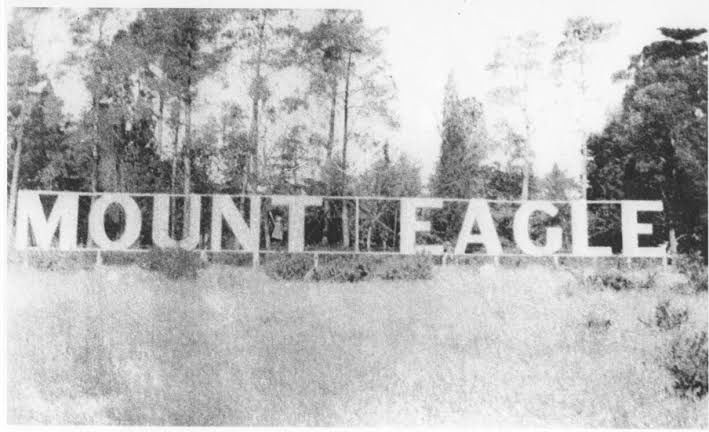
Will the rich history of the broad area originally called Heidelberg - a part now called Eaglemont - be respected as "neighbourhood character" is put under pressure by "housing"?
(Photos added for colour & interest)
MEMORIES OF HEIDELBERG
(Sourced by Nilss,)
Leader, 19.05.1900
BY B. F.
The Mount Eagle Estate comprises 60 acres of the heights overlooking Hartland's and Chartersville. About 1855 it was purchased for £60 an acre by Mr. William Henry Mitchell, who did not build there, but resided at Banyule, where he could keep an eye on the working of the police cadets, a system instituted by himself when Chief Commissioner of Police under Governor Latrobe.
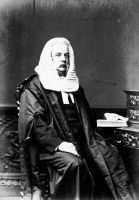
During his regime bushranging received a severe check, and was almost entirely put down. Mr. Mitchell was Postmaster-General from April, 1857, to March, 1858, became President of the Legislative Council in October, 1870, and was knighted in 1875.
The Mount Eagle property did not long remain in Mr. Mitchell's hands, the next owner being Mr. John Henry Brooke, who was Minister of Lands in the Heales Government, 1860-61.
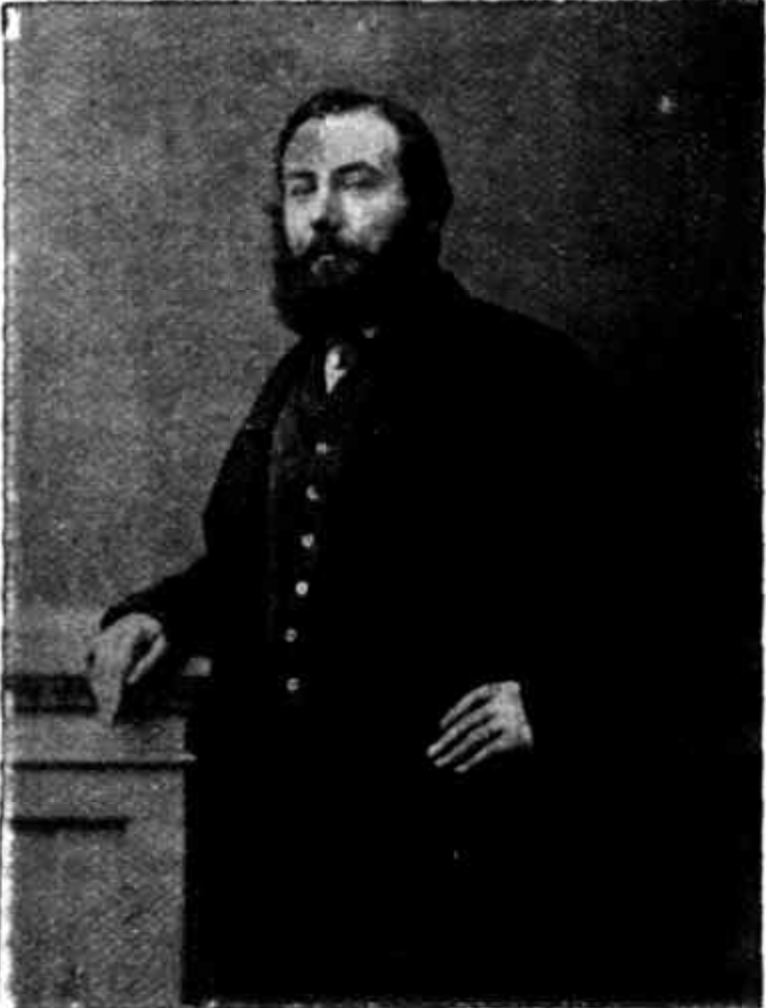
He at once began to improve the place by an extensive system of tree planting, employing a good practical gardener, who, by means of a hot house and garden frames, propagated seeds imported by Mr. Brooks from various countries, and planted out the young trees all over the estate. These trees, now upwards of 40 years old, form a magnificent plantation, with winding avenues and picturesque glades, and seen from the road or railway make a solid mass of dark green, very restful to the eyes among the surrounding fields of parched yellow grass.
It was Mr. Brooke's intention to build a mansion on the summit of Mount Eagle, where at first he lived in a tent with his wife and two daughters. The timber for flooring was brought on the ground, and with this a temporary house was put up, the boards being placed perpendicularly instead of in weatherboard fashion.
The projected mansion, however, was never built, for Mr. Brooke, having lost his seat in Parliament, emigrated with his family to Japan.
Mount Eagle belonged to the late Sir Samuel Wilson for many years, and in 1888 was purchased by the Eaglemont Estate Company Proprietary Limited. The company held it for a short time, until by arrangement it reverted to private ownership.
The old house, some 10 or 12 years ago, was much frequented by artists, and was the scene of many a picnic, afternoon tea and impromptu dance.
By the courtesy of the present occupant an annual picnic of Heidelberg residents takes place on the top of the eastern spur of Mount Eagle, which must be the very spot on which "Continental Brown" stood when, expatiating on the magnificence of the scenery around, he named the place Heidelberg.
The incident is narrated in "Old Melbourne Memories," by "Rolf Boldrewood," in a chapter called The Christening of Heidelberg. No one standing there on a bright day or a clear moonlit night would say that the enthusiasm of Heidelberg's godfather was misplaced or exaggerated.
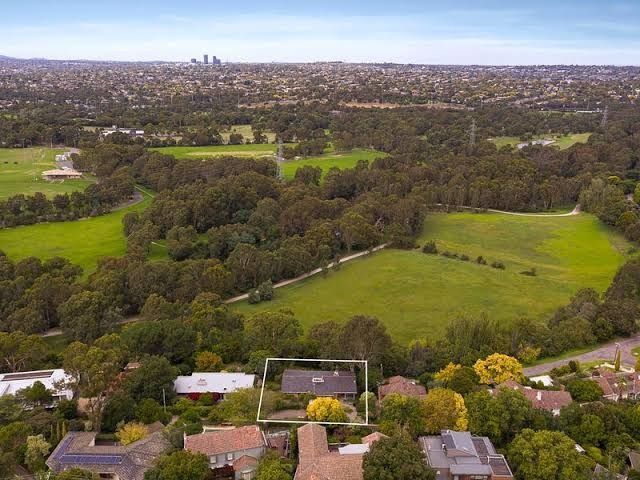
On the other side of the village, to the north, is situated the Rosanna Estate, extending between the upper and lower Plenty roads. The house is on the hill above the Heidelberg Park, and was in the early days the residence of Mr. Justice Willis, a pleasant old gentleman in private life, but impatient and hot tempered on the bench. The house is a comfortable and unpretentious country home, the verandahs enclosed with glass to form conservatories. After Judge Willis left it a Iadies' school was conducted there for a time; then Mr. Vasey, the late secretary to the Collingwood Gas Company, occupied it, since when it has had various tenants.
The hill east of Banyule is the site of a pretty villa called View Bank, the property and the residence for many years of Dr. Martin, who laid out the grounds and kept them in beautiful order. This place, like many of those already described, has become a mere dairy farm, the garden being a grazing ground for cattle.
Higher up the river, on the opposite bank, Mr. R. D. Ireland, Q.C., selected a romantic spot for his country house, which was built soon after the discovery of gold at Wood's Point. He called it the "Bungalow," and entertained many kindred spirits at the festive board within its walls. The house is of brick, having a bow window in front, and a verandah with bricked floor, enclosed by a trellis covered with climbers.
A plantation of ornamental trees surrounds it, and extends in the form of an avenue to the gate. On the further side the garden descends to the precipitous banks of the Yarra, very high at that point, and the water may be seen and heard sparkling and rushing among the rocks, forming a series of rapids and miniature waterfalls. The father of the present proprietor of Riddell's Creek nursery was employed by Mr. Ireland to lay out the garden and plant the trees.
The flood of 1863 worked great destruction here, fruit trees, strawberries and asparagus beds, soil and all, being washed away. Cattle now roam at will over the grounds on which so much skill, labor and money were expended. Here the reign of art has ceased, but nature's beauty lasts.
"Rolf Boldrewood" said long since:— "Some of these fine days, they tell me, there will be a railway to Heidelberg.Then the slopes will be cut up into building sites, the river meadows irrigated, or turned into market gardens or creameries."
His prophecies are being gradually fulfilled, for the direct railway is in sight and approaching slowly but surely.
The slopes, especially on the Eaglemont Estate, have been cut up into building sites, and are about to become the homes of the Heidelberg of the future. Market gardens had their day, and, being cut up for building lots in the last land boom, have lain desolate ever since. Irrigation was tried more than 30 years ago by a well-to-do farmer named Ricardo, who ruined himself by his experiments, and ended his days in the Benevolent Asylum, of which institution he had been made a life governor in the time of his prosperity.
Not a creamery, but a cheese factory, once existed in the village, the building being quite remarkably unsightly. When its proper business died out for lack of support, it became a hay and corn store; now, being left empty, it is gradually dropping to pieces.
Closely connected with the homes of a people are its churches. The oldest church in the colony now extant is Scots' Church, Heidelberg, dating from 1842.
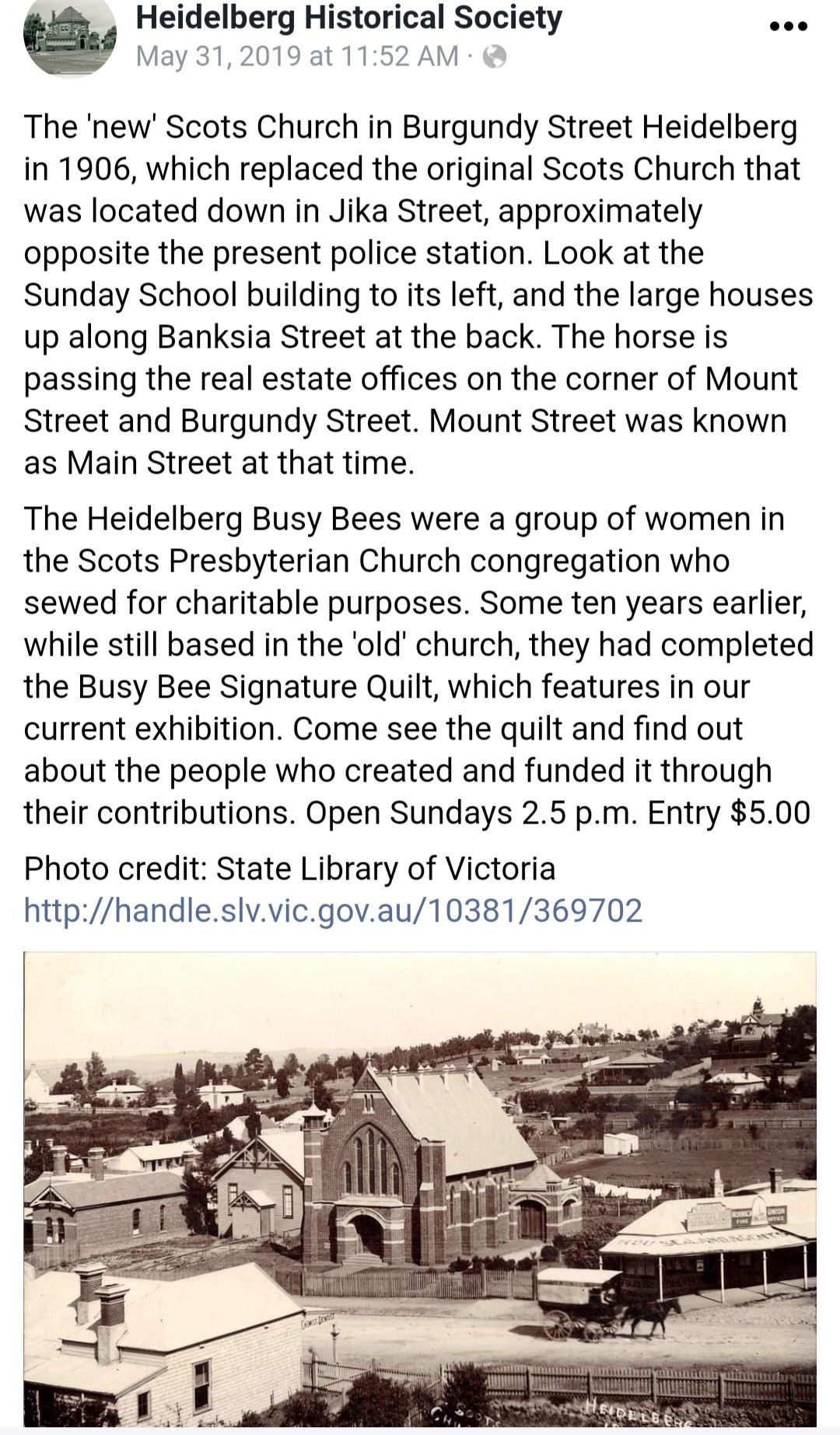
The Rev. Peter Gunn gave the site, which belongs exclusively to the Heidelberg congregation, the reserve granted by the Government being still unoccupied.
The building is plain to a degree, unrelieved by the planting of a tree or the training of ivy sprays over its rough yellow walls. It has never had a vestry, and was a venerable structure before the wooden porch was erected over its only door.
For the first half of its existence it was not even enclosed, and the neat picket fence put up a generation ago has never been renewed or re-painted, gaps being filled up by rough palings or fencing wire.
A great contrast from an aesthetic point of view, is St. John's Church of England, a white building surrounded by wide spreading cedars, its square battlemented tower being an attractive object in the landscape.
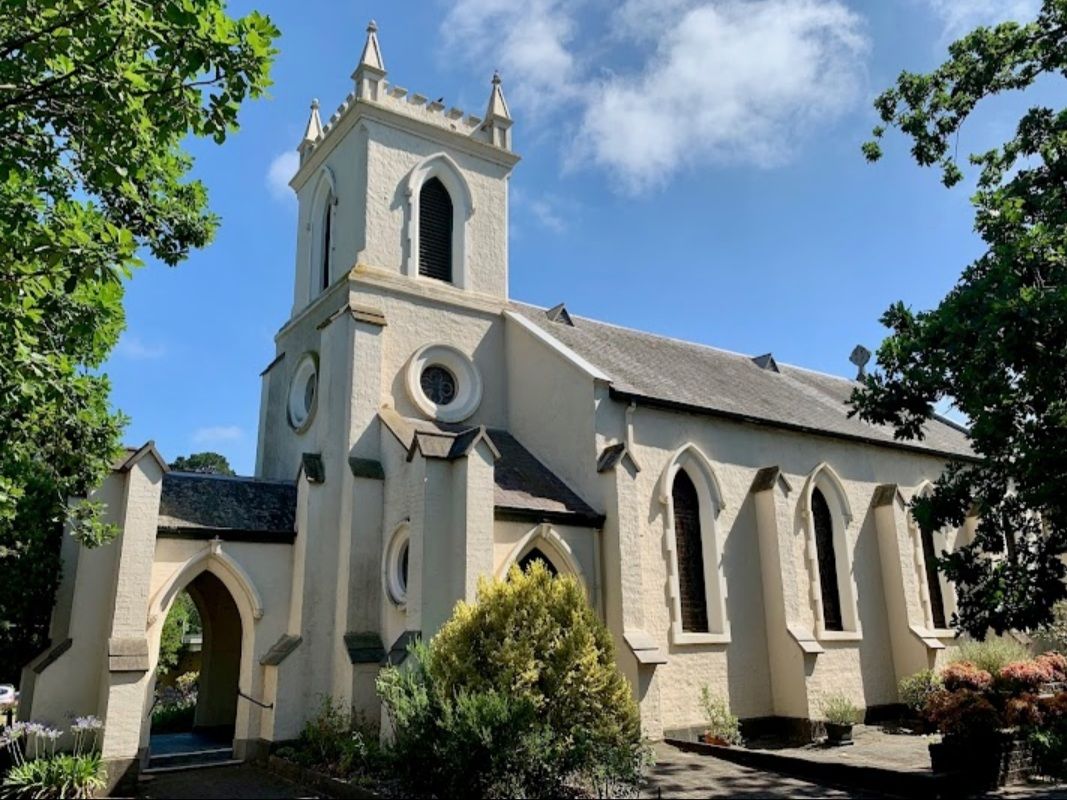
The church was opened in October, 1851, when the Rev. Francis Hales conducted the services, and the Right Rev. Charles Perry, Bishop of Melbourne, preached both morning and afternoon. This occasion, however, was not the beginning of Anglican worship in the district. When Bishop Perry arrived in Melbourne in 1847 he brought with him the Rev. H. B. Macartney, for many years Dean of Melbourne, who officiated for several months in Heidelberg, the Scots' Church being occupied on alternate Sundays by Presbyterians and Anglicans.
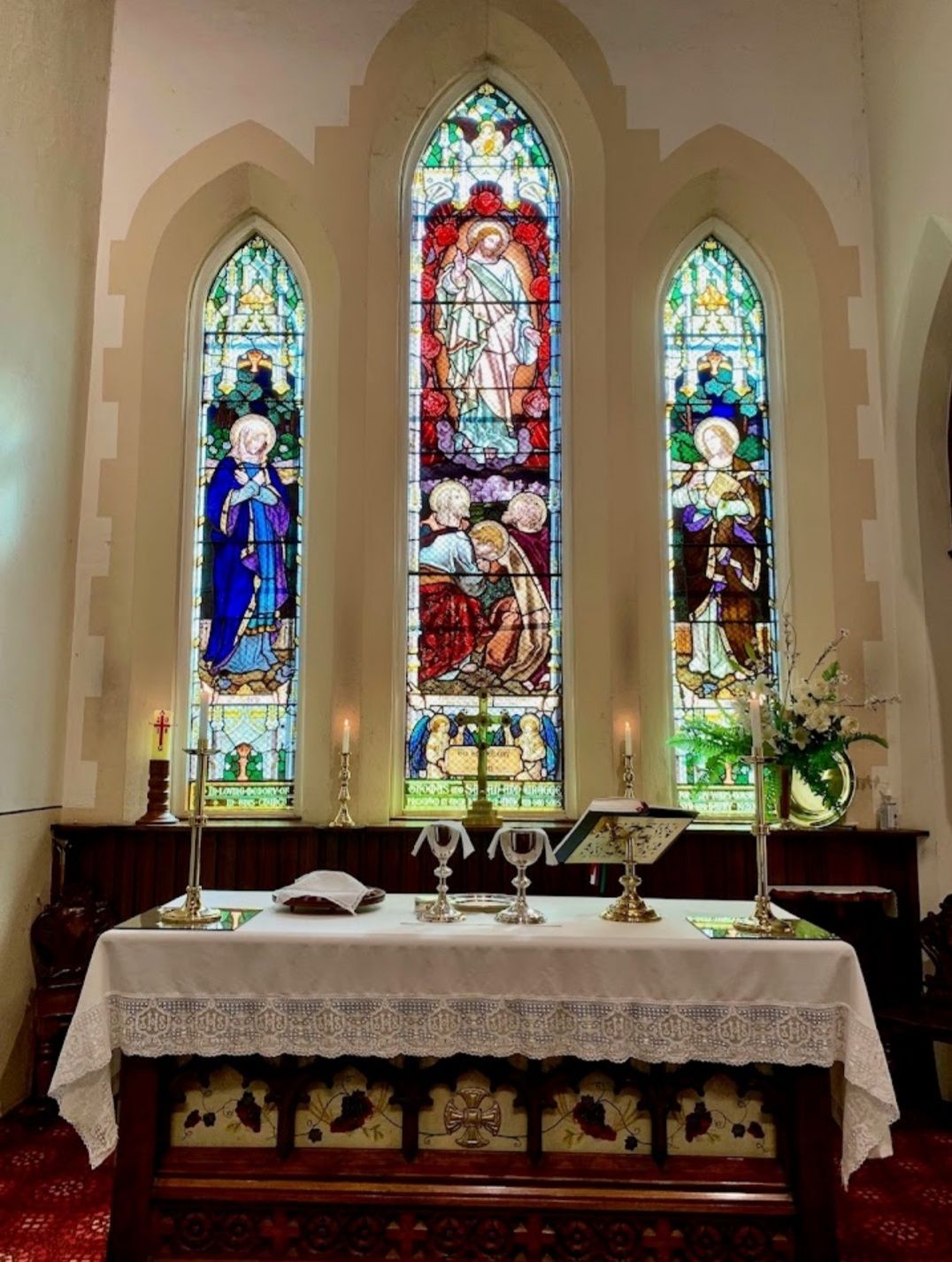
St. John's Church contains several beautiful windows; that to Mr. Macarthur has been already mentioned. Another, in memory of their parents, was the gift of Mr. R. W. K. Martin's daughters, one of whom has since died, and a mural tablet to her memory has been created by her sister. Mrs. Elizabeth Galbraith James was the donor of a window in memory of her husband, Dr. Henry James, her mother and her uncle. A fourth memorialises Charles and Isabella Maplestone of Ivanhoe, and was the gift of their children. The colored east window in the chancel was erected before cathedral glass was imported.
The Roman Catholic Church, also called St. John's, occupies an elevated site in the centre of the village. It is of bluestone, and the design has not yet been completed. A well grown plantation of pines and cypresses gives it an old-world look of venerability.
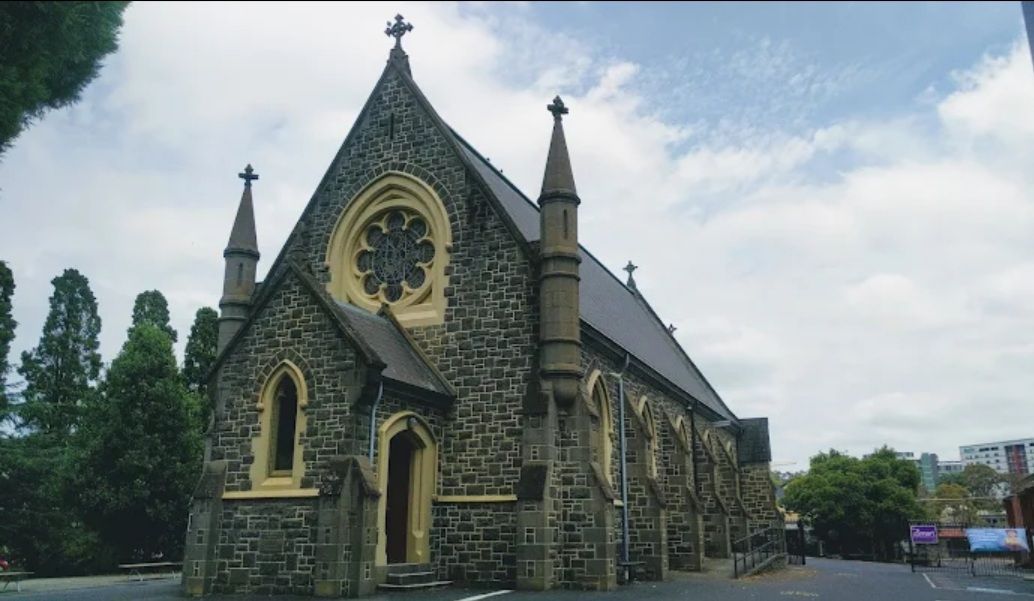
The signs of the times are that Heidelberg, the "Sleeping Beauty" of the last half century, is about to awake, and take her place among the busy, lively daughters of the metropolis, but whether the change will be for her own truest happiness who can say?
And Then Along Came the Burley Griffin's Contribution...........

Do not - I repeat - do not overlook Marion Mahoney Griffins role with her husband in their architectural and town planning roles in Melbourne, Sydney and of course Canberra.
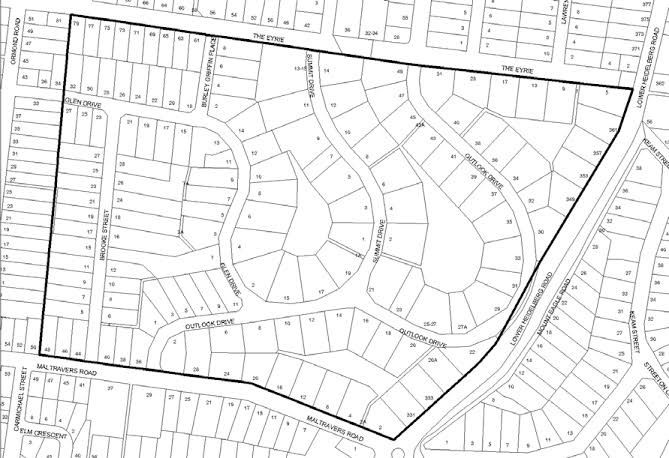
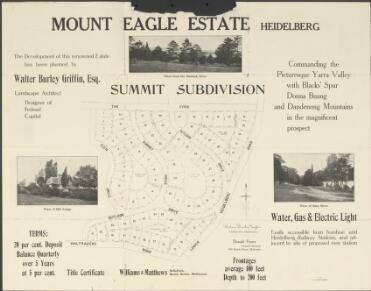
Member discussion